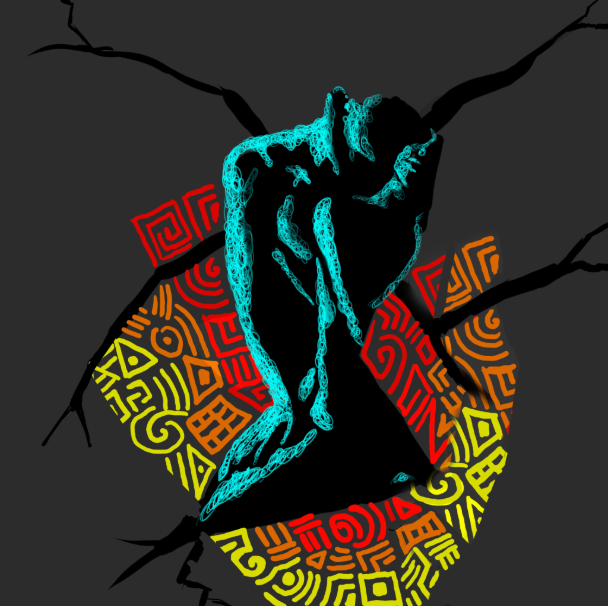Henry Adewumi’s Compelling Narratives at the Madeke Modern Art Exhibition
Written by Ade Olusola Kunmi
Child labor
Henry Adewumi, is a Nigerian artist, with captivating art works, showcased at the Madeke Modern Art Exhibition in May 2024. Adewumi’s uses his art to narrate compelling stories from the African perspective. Displaying four significant artworks, Adewumi brilliantly depicted various aspects of African life, with each piece resonating deeply with viewers. Among these, “Child Labour” emerged as the most striking, offering a profound commentary on a critical social issue.
“Child Labour” is a haunting piece that portrays the dual life of a young child who juggles education and labor. By day, the child attends school, eager to learn and grow. However, after school, they are thrust into a factory environment, working to support their family. This stark contrast is masterfully depicted by Adewumi, whose artistry brings to life the harsh realities faced by many children in Africa. The painting’s dark background amplifies its emotional impact, creating an eerie, somber atmosphere that evokes a deep sense of empathy and sorrow.
The dark tones in “Child Labour” are not just a stylistic choice but a narrative tool that underscores the painting’s theme. The background’s darkness symbolizes the overshadowing of the child’s innocence by the burdens of economic necessity. This setting enhances the viewer’s focus on the child’s plight, making their sorrowful expression and weary posture even more poignant. Adewumi’s attention to detail in capturing the child’s emotions is remarkable, effectively conveying the emotional and physical toll of child labor.
Embracing Intimacy
In many African towns, children like the one depicted in “Child Labour” lead lives marked by hard work and minimal play. They shoulder adult responsibilities at a young age, helping their parents by selling goods or engaging in other forms of labor. This common yet heartbreaking scenario is brought to the fore in Adewumi’s painting, urging viewers to confront the reality that many African children are deprived of a carefree childhood.
“Child Labour” is not just a depiction of a child’s plight; it is a powerful call to awareness and action. Through this artwork, Adewumi highlights the stark disparities between the lives of these children and their more fortunate peers who enjoy the luxuries of childhood. The painting challenges viewers to reflect on societal inequalities and consider the broader implications of child labor on a community and nation.
Adewumi’s consistent use of dark backgrounds across his artworks is a signature element that adds depth to his storytelling. This technique not only enhances the visual impact of his pieces but also reinforces the gravity of the themes he explores. In “Child Labour,” the dark background serves as a metaphor for the shadow cast over the child’s life, making the narrative more compelling and urgent.
Beyond its visual appeal, Adewumi’s art serves as a form of social protest. His works are not merely aesthetic; they are charged with socio-political commentary, urging viewers to engage with and respond to the issues depicted. “Child Labour” exemplifies this approach, using art as a medium to draw attention to child labor’s harsh realities and advocate for change.
Henry Adewumi’s exhibition at the Madeke Modern Art Exhibition was a testament to his brilliance as an artist and storyteller. “Child Labour,” with its haunting imagery and profound message, stood out as a highlight, compelling viewers to confront uncomfortable truths. Adewumi’s ability to blend artistic excellence with powerful social commentary ensures that his work resonates on multiple levels, making him a significant voice in contemporary African art.
Henry Adewumi’s work at the Madeke Modern Art Exhibition showcased his exceptional ability to capture and convey complex narratives through his art. His use of dark backgrounds, emotional depth, and socio-political themes make his pieces not only visually stunning but also deeply impactful. “Child Labour” is a prime example of his artistry and advocacy.

